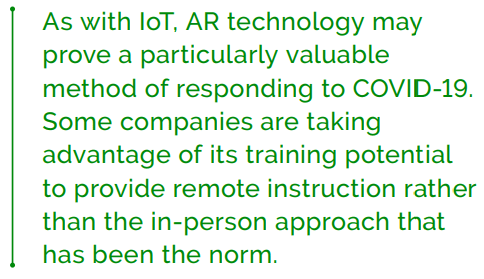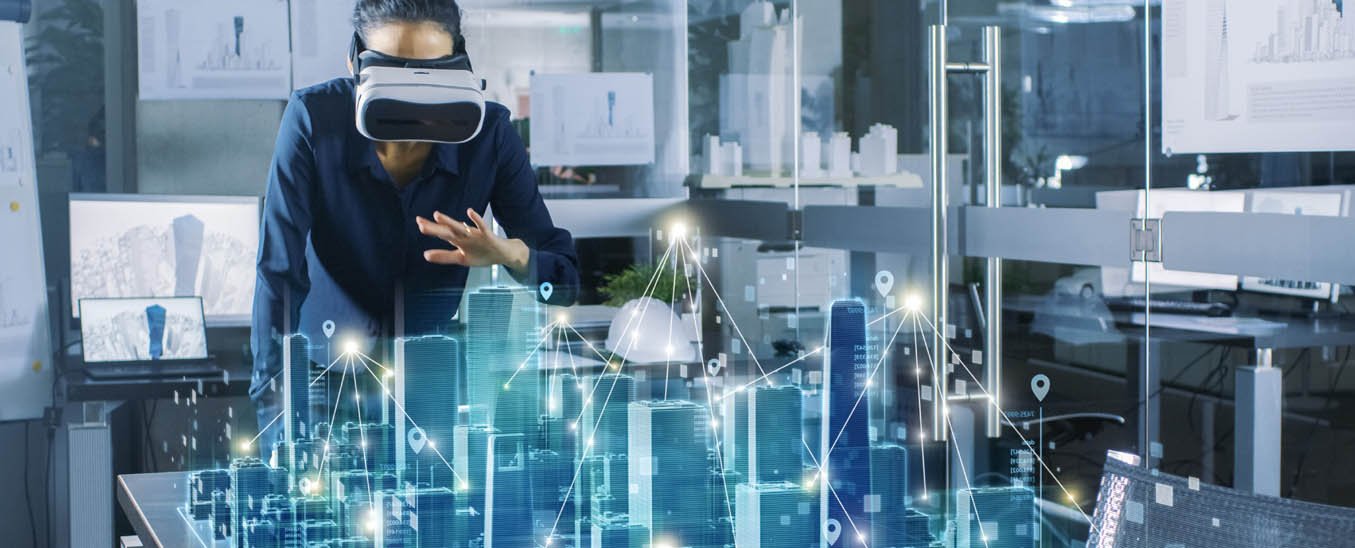Additionally, AR can actually aid in conducting repairs or assembling complex machinery. To this end, Boeing has leveraged Upskill’s Skylight tool to guide workers engaged in wire harness assembly in aircraft. By walking workers through the process as they do it, Boeing was able to cut production time by 25% and lower error rates to near zero.
 The beauty of this approach is that AR tools can capture the work of subject matter experts as they perform a complex task, providing their colleagues not only with training materials, as in the case above, but also providing guidance as they actually complete the task themselves. What’s more, you can also apply the same technology to things like QA, guiding QA techs as they conduct inspections and providing them with a way to record any defects or issues they discover.
The beauty of this approach is that AR tools can capture the work of subject matter experts as they perform a complex task, providing their colleagues not only with training materials, as in the case above, but also providing guidance as they actually complete the task themselves. What’s more, you can also apply the same technology to things like QA, guiding QA techs as they conduct inspections and providing them with a way to record any defects or issues they discover.
Finally, thanks to advances in image recognition and other visual systems, as we discussed in the section on robotics, companies can use AR to help workers find things in warehouses and even identify spare parts. These applications have also found uses in retail environments. For example, Bell Integrator, which launched an AR platform in 2017, developed an app for an auto parts chain that allowed customers to identify the replacement parts they needed simply by viewing their vehicle through the app.
AR has also established a foothold in healthcare, providing doctors and other practitioners with tools allowing them to “see” a patient’s vascular system—allowing for greater accuracy when drawing blood or starting an IV—or visualize tumors in 3D. As was the case in the industrial space, AR is being used for training in healthcare as well. Physicians can use AR headsets, for example, to be “telementored,” whereby a remote surgeon can watch a surgery as it is taking place and provide the acting surgeon with real-time guidance. Similarly, physicians can use these headsets to record what goes on in the OR, coordinate OR staff, and assess surgeon performance.















 The beauty of this approach is that AR tools can capture the work of subject matter experts as they perform a complex task, providing their colleagues not only with training materials, as in the case above, but also providing guidance as they actually complete the task themselves. What’s more, you can also apply the same technology to things like QA, guiding QA techs as they conduct inspections and providing them with a way to record any defects or issues they discover.
The beauty of this approach is that AR tools can capture the work of subject matter experts as they perform a complex task, providing their colleagues not only with training materials, as in the case above, but also providing guidance as they actually complete the task themselves. What’s more, you can also apply the same technology to things like QA, guiding QA techs as they conduct inspections and providing them with a way to record any defects or issues they discover.